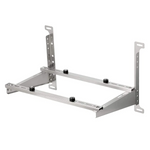In the world of HVAC, efficiency matters. Not only does it impact your comfort at home, but it also affects your energy bills and the environment. However, with advancements in technology and industry standards, understanding efficiency ratings can sometimes feel like deciphering hieroglyphics. Enter the SEER rating and its newer counterpart, the SEER2 rating. What are these ratings, and how do they differ? Let's dive in and decipher the latest changes in efficiency testing in the HVAC industry.

SEER Rating: The Standard Measure
SEER, or Seasonal Energy Efficiency Ratio, has long been the standard measure of efficiency for air conditioners and heat pumps. It represents the cooling output during a typical cooling season divided by the total electric energy input during the same period. In basic terms, it tells you how efficiently a system uses energy to cool your space.
For decades, the SEER rating has been the go-to metric for consumers looking to assess the efficiency of their HVAC systems. Higher SEER ratings typically indicate greater energy efficiency and lower operating costs. However, as technology advances and energy-saving innovations emerge, industry experts recognize the need for a more nuanced approach to efficiency testing.
SEER2 Rating: The Evolution of Efficiency
SEER2, or Seasonal Energy Efficiency Ratio 2, represents the next generation of efficiency testing in the HVAC industry. Unlike its predecessor, SEER2 takes into account a broader range of operating conditions and factors, providing a more accurate reflection of real-world performance.
One of the key differences between SEER and SEER2 is the inclusion of partial-load efficiency testing. While SEER primarily focuses on full-load conditions, SEER2 incorporates data from varying load levels, mimicking the fluctuating demands of a typical cooling season more effectively. This means that SEER2 ratings offer a more comprehensive view of a system's efficiency across a range of operating scenarios instead of one non-changing testing condition.
Additionally, SEER2 introduces a standardized test procedure known as AHRI Standard 210/240, which aims to improve consistency and reliability in efficiency measurements. By adhering to a uniform testing protocol, manufacturers can ensure their products undergo rigorous evaluation under controlled conditions, enhancing transparency and trust in the marketplace.
What Does This Mean for Consumers?

For consumers, the shift from SEER to SEER2 represents a positive step in the quest for greater energy efficiency and sustainability. By adopting an updated approach to efficiency testing that closely mimics real-world usage, SEER2 provides consumers with more reliable information to make informed purchasing decisions.
When shopping for a new air conditioner or heat pump, pay attention to both SEER and SEER2 ratings. While SEER remains a valuable benchmark, SEER2 offers a more comprehensive assessment of a system's performance under real-world conditions. By comparing both ratings, you can ensure that you're investing in a system that not only saves you money but also minimizes environmental impact.
Conclusion
In conclusion, the HVAC industry's transition from SEER to SEER2 reflects ongoing efforts to improve energy efficiency standards and promote sustainability. By embracing these changes and staying informed, consumers benefit from more efficient HVAC technology while reducing their carbon footprint. So, the next time you're in the market for a new HVAC system, remember to look beyond the SEER rating and consider the broader picture of efficiency with SEER2. Your comfort, your wallet, and the planet will thank you for it.
To choose your next SEER2-rated appliance, check out TOSOT’s line of SEER2-rated mini split AC systems and new Central Ducted Systems to not only keep you cool, but also save you money on your monthly energy bill.





